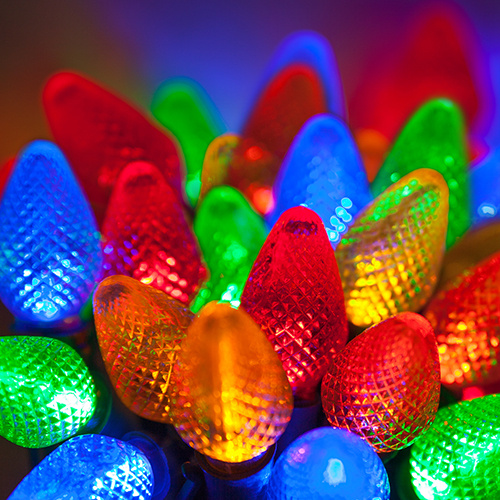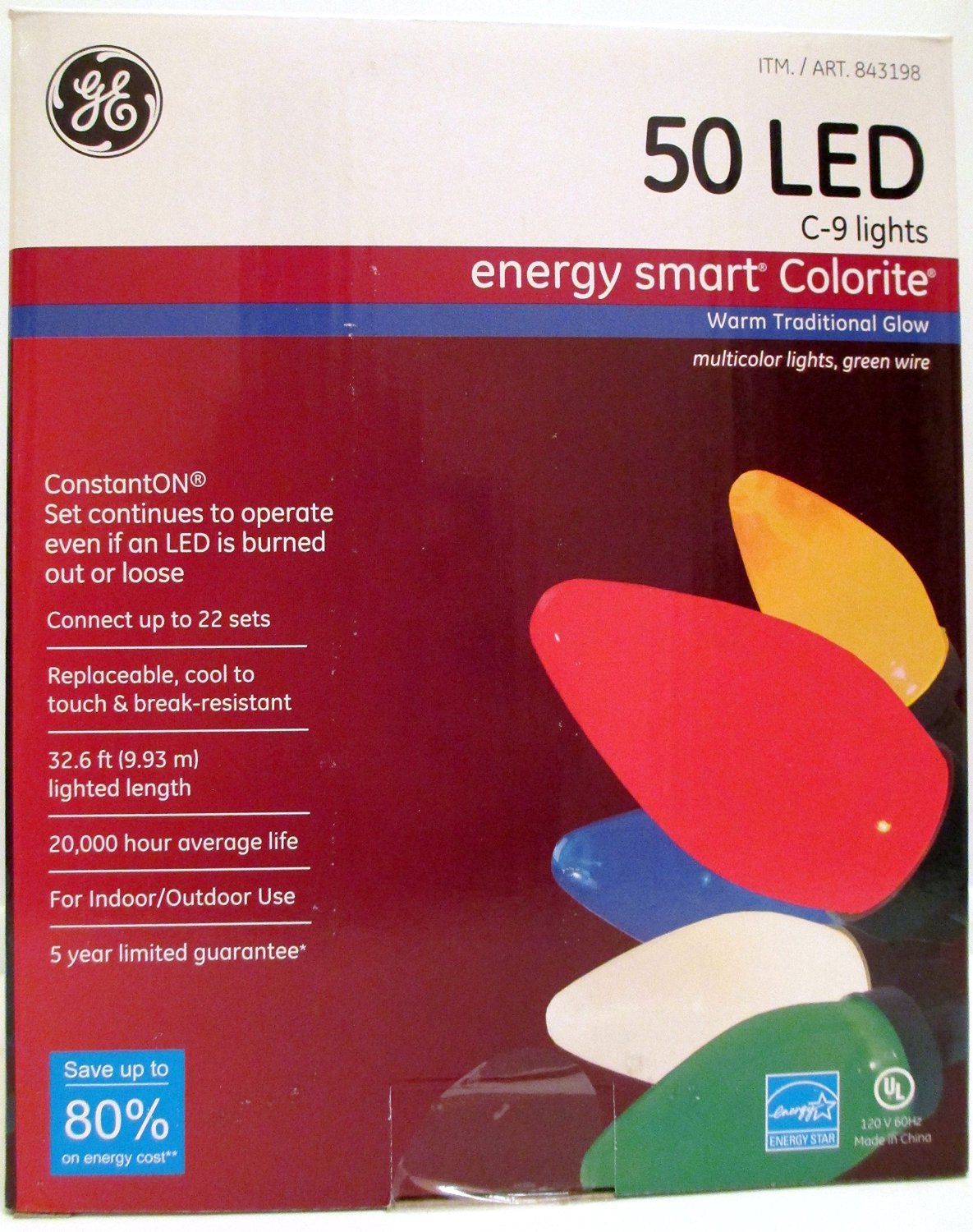LED Christmas Lights
During the Holiday season, many people (including us here at Green Home Source) choose to show their holiday spirit to the world by adorning their homes with Christmas lights, and LED Christmas lights are a growing trend in holiday decorating.
LED Christmas Lights: A Revolution in Exterior Illumination
The bright, colorful Christmas lights lighting up a home on a cold, dark December night is a festive, inviting sight (and don't forget they let Santa know where you live). Unfortunately, traditional Christmas lighting is terribly energy-intensive. It's not unusual for power bills to skyrocket during the Christmas season due to holiday lighting.
This has presented a quandary for those who want to use less energy but still love Christmastime. Energy-saving LED Christmas lights started arriving on store shelves several years ago, but adoption has been slow; early versions left a bit to be desired. White lights were too bright, with a bluish hue. Colored LED's didn't have that warm glow associated with traditional lighting. And like any new product, LED lights were pricey, especially compared to their traditional counterparts.
Progress in LED technology has allowed manufacturers to make great strides in the last year or two, making LED Christmas lights look more like the lights we grew up with, while still allowing for a drastic reduction in energy usage.
LED Christmas Lights vs. Traditional Christmas Lights
New LED Christmas lights have several advantages over regular lights; the most obvious difference is energy use. A string of LED lights uses a fraction of the energy used by a similar string of standard lights. A comparison at a major retail chain recently identified these energy requirements:
- LED Mini-Lights (60 bulbs): 4.8 watts
- Regular Mini-Lights (100 bulbs): 40.8 watts
- (The 60 LED bulbs put out about the same amount of light as the 100 traditional bulbs.)
- LED C9 Lights (25 bulbs): 2.4 watts
- Regular C9 Lights (25 bulbs): 175 watts
If your home is decked with hundreds, sometimes thousands, of these lights, the energy savings of switching to LED lights can pay for the initial cost in a short amount of time.
Further Advantages of LED Christmas Lights
Everybody who's ever strung up lights at Christmas knows the frustration of the burned out bulb. In older strings, if one bulb burned out, the whole string went dark. Newer strings eliminated this problem, but bulbs still go out with alarming frequency. LED light bulbs last much longer, upwards of 25,000 hours, without ever burning out.
LED bulbs are made of high-impact plastic, and have no glass or filament to break.
LED bulbs are cool to the touch; traditional bulbs can get quite hot and be a fire risk, especially indoors.
Since they use much less power, numerous strands of lights can be strung together without fear of overloading circuits or creating a fire hazard. This is convenient when outdoor outlets are limited or if you're pulling a 'Clark Griswold' and lighting the ENTIRE house!
LED lights are available in a growing variety of styles, from traditional-looking lights to icicles, snowflakes, and other shapes. Since each LED bulb is controlled by a tiny processor, creative types can create elaborate displays of rapidly blinking, flashing lights.
Potential Disadvantages of LED Christmas Lights
The list of possible disadvantages gets a little shorter each year; early LED lights were very expensive. While costs are dropping a little bit each year, LED holiday lights are still more expensive than traditional lights. But it's important to remember that the energy savings and longer life span will more than make up for the cost discrepancy over time.
Early LED's had a 'harsh' quality to their light, especially white lights which had an unusual blue tint to them. Look for newer "warm" white LED lights, which have fixed this problem. Early colored LED's were extremely bright; again, newer versions have a much more natural, warm glow to them.
In our opinion, LED Christmas lights are THE way to go. The difference in energy usage is simply too high to continue using traditional lights. With any Christmas lights, you can save further energy by making sure lights are turned off during the day and middle of the night; installing timers can make this easy to do.
Tips for Saving Energy with Christmas Lights
If you put any kind of Christmas lights or lighted displays up at your home for the holidays, you should seek out the most energy-efficient lights possible, and right now that means LED lights. But regardless of the type of lights you use, there are some basic common sense steps anyone can take to save energy during the season.
- Turn them off at night! Putting your exterior Christmas lights on a timer, or simply turning them off manually, when you turn in for the night will save a lot of energy. Lights left on all night long, when most people will never see them, is wasteful.
- Turn them off during the day! Leaving lights on all day long, when the sun is up, and most people are away at work and school, is equally wasteful. Again, taking the time and effort to turn off lights during the day will pay itself back in drastically reduced energy bills. In the evening, after dark, turn those beautiful lights on and let your neighborhood delight in your creative display! (And then turn them back off later.)
Shop online easily for energy-saving LED Christmas lighting products HERE!
comments powered by Disqus




























































































































































































